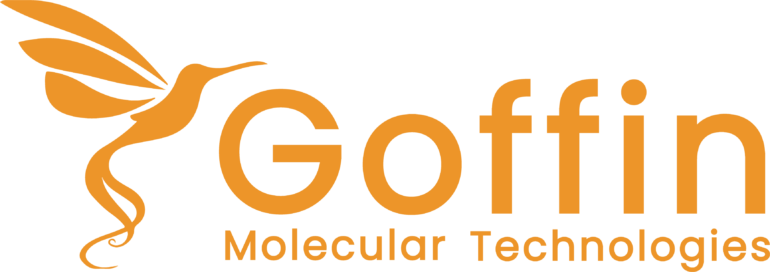
X
- No products in the list

The ViennaLab 16S Microbiome + ITS NGS Assay combines library preparation and integrated bioinformatic analysis to enable species-level classification of both bacteria and fungi colonizing the human gut. Imbalances in the microbiome have been associated with conditions such as obesity, type II diabetes, and more.
The assay provides a powerful end-to-end solution, from library preparation through data analysis, allowing for rapid and comprehensive evaluation of microbial composition. The kit supports multiplexing of up to 96 samples per set and can be scaled by combining different indexing primer sets. Recent improvements include an optimized two-step PCR protocol with optional fungal ITS2 detection, reduced tube usage for less plastic waste, and access to the ViennaLab Microbiome Analysis Webtool and MicrobeCalc™ software for streamlined sequencing analysis.
For research use only. Not for use in diagnostic procedures.
In the expanding field of microbiome research, the ability to accurately characterize microbial communities is key to understanding their impact on human health and disease. The ViennaLab 16S Microbiome + ITS NGS Assay is designed to meet this need by enabling species-level identification of both bacteria and fungi. With a streamlined library preparation protocol and integrated bioinformatic tools, it offers laboratories a powerful and efficient solution for next-generation sequencing (NGS)–based microbiome studies.
The assay targets two of the most informative genomic regions used in microbiome research: the bacterial 16S rRNA gene (V3–V4 region) and the fungal Internal Transcribed Spacer 2 (ITS2). This dual-target approach allows for the simultaneous characterization of bacterial and fungal communities within a single workflow. Separate primer mixes for bacteria and fungi provide flexibility, making it possible to focus on bacterial profiling alone or to expand analysis to include fungal detection when needed.
At the core of the assay is a fast and optimized 2-step PCR protocol. In the first PCR step, the selected target regions are amplified with heterogeneity spacers that improve library diversity and sequencing performance. The second PCR step introduces dual index sequences, ensuring accurate sample demultiplexing and supporting high-throughput studies. From DNA to sequencing-ready libraries, the process can be completed in less than three hours, minimizing turnaround time without compromising data quality.
Each kit supports up to 96 uniquely indexed samples per set, with three independent index sets (A, B, and C) available for larger projects. By combining sets, laboratories can scale their workflows to accommodate expanded cohorts while maintaining unique index combinations across all libraries. This makes the assay suitable for both focused pilot studies and large-scale microbiome investigations.
Data interpretation is simplified through the ViennaLab Microbiome Analysis Webtool, which provides automated diversity metrics, clear summary tables, and graphical visualizations. Additionally, the MicrobeCalc™ software (rev. 2.0) assists in sample pooling and normalization, ensuring balanced sequencing performance across experiments. Together, these tools reduce the complexity of NGS analysis and provide researchers with actionable insights in a straightforward format.
By enabling reliable detection of both bacterial and fungal taxa, the assay supports research into a broad spectrum of microbiome-associated phenotypes. Alterations in microbial composition have been linked to conditions such as obesity, type II diabetes, and other health-related outcomes. The assay’s flexibility, sensitivity, and comprehensive data analysis capabilities make it a valuable tool for laboratories advancing the understanding of host–microbiome interactions.
The ViennaLab 16S Microbiome + ITS NGS Assay combines targeted sequencing, a rapid and efficient workflow, scalable multiplexing, and integrated bioinformatics in one complete solution. Designed for research use, it provides laboratories with the precision and reliability required to explore the complexities of the human microbiome.
Note that the 16S Microbiome + ITS NGS Assay is for research use only and not for use in diagnostic procedures. If you plan to sequence more than 96 samples on one flow cell, you should order kits with different sets (e.g. Set A and Set B) to ensure all individual libraries sequenced in the same pool have a unique indexing primer combination. For smaller-scale studies, a 16-reaction version (Set 9-131-16) is also available, providing the same workflow with reduced throughput.
[REF 9-131] – Set A
[REF 9-132] – Set B
[REF 9-133] – Set C
Note: REF 9-131, 9-132, and 9-133 differ only in their indexing primer sets. For sequencing more than 96 samples on a single flow cell, order different sets (e.g., Set A and Set B) to ensure all libraries have unique index combinations.
[REF 9-131-16] – Set A (16 Reactions)
Note: Indexing primers in REF 9-131-16 overlap with Set A (REF 9-131).
Sequencing Services: A service for the sequencing of the 16S rRNA gene libraries on a MiSeq or NextSeq instrument, with various read lengths and options available.
The kit also includes instructions for use, as well as a protocol for the preparation and sequencing of 16S rRNA gene libraries using the provided reagents and services.
Instructions for Use
Brochure
MSDS